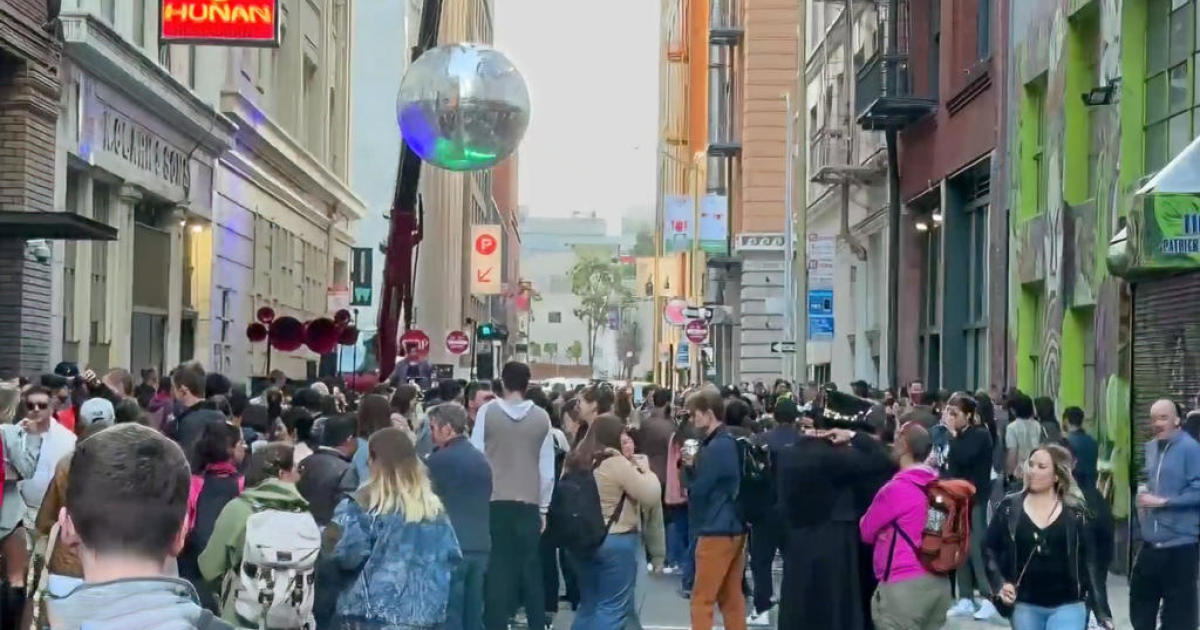Eucalyptus falling in SF Golden Gate Park shows vulnerability of aging trees
SAN FRANCISCO – On Monday, 11 people escaped possible death when a large tree fell across a busy street in Golden Gate Park. It may have been the result of the weather, but arborists say the type of tree also played a major role in the near disaster.
It happened at 4 p.m. on Crossover Drive, the extension of 19th Avenue through the park. The massive tree fell, crushing five cars underneath.
No one was killed or even seriously injured. It left the occupants of the cars feeling shaken, but awfully lucky.
"I think it's important to note that these vehicles were in motion when this tree fell down," said San Francisco Fire Department Capt. Jonathan Baxter at the scene. "Had this tree fallen just a second later, we would be looking at a much worse scene behind us then we're seeing right now."
The tree, a huge eucalyptus, just fell over: it's roots no longer able to hold it upright. As startling as that may sound, it's really not all that uncommon these days.
"Literally, for years, I did not see a single eucalyptus uproot, unless they were construction-damaged," said Tad Jacobs. "Now we're seeing root decay, root loss, and other degradations in the root system that are having the trees fall over."
Jacobs is the founder of Treemasters Tree Service in San Rafael. He said eucalyptus trees, which are naturally pest-resistant, were imported from Australia about 100 years ago, and widely planted.
"It was going to be the new gold rush in California. It was going to be timber, for lumber."
The wood proved to be unsuitable, but the trees just took over, and now they're everywhere. But many are also reaching the end of their natural 80-90 year lifespans, which spells trouble for those whose homes are right next to them.
It may be hard to tell just by looking at them.
"Every tree that's fallen over on a house is full of leaves and people say, 'The tree looked healthy, it's full of leaves.' Well, they look like that the moment before they fall," said Jacobs. "As the roots start to fail and rot and decay away, the tree just falls over. And it literally looks like there was nothing holding the tree into the ground."
So, many wary homeowners are simply having eucalyptus removed. As for the tree in Golden Gate Park, the San Francisco Rec and Park Department said they are removing any other trees in the vicinity that may have been compromised.
In a statement they said, "We'll continue to inspect for remaining and immediate hazards over the next couple of days. Our staff will identify any hazards they see in the field."
Jacobs said, as more rains fall and the ground softens, the trees could become more vulnerable. But the real enemy is wind.
"The trees can handle sustained rain, they can handle soft swale," he said. "But once the wind comes in, that's what brings trees down, more than rain. But the combination of heavy rain and heavy wind...you end up with an arboricultural Armageddon. They just all start falling over."
Jacobs recommends that large, mature trees near structures be inspected by a professional. Many deep root problems cannot be detected, but if cracks are evident or water is oozing up near the base of the tree, it could be evidence of imminent failure.




